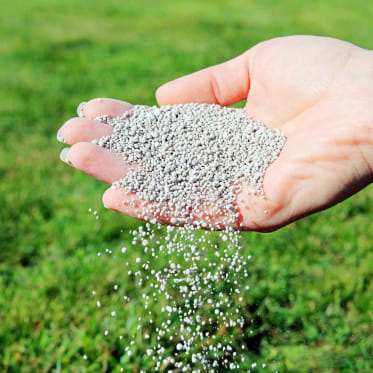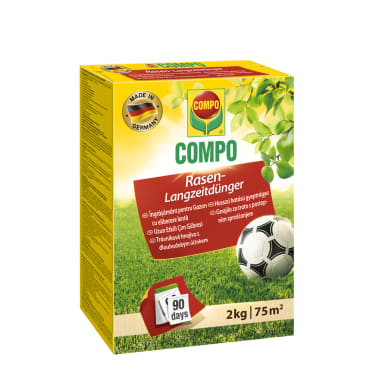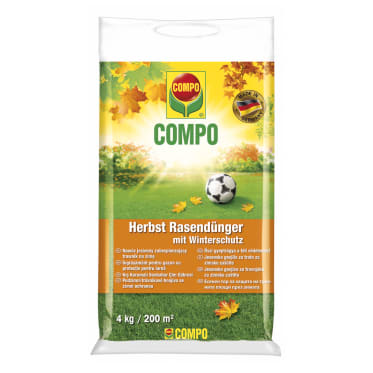Frequent search terms

- COMPO
- Guide
- Plant Care
- Lawns
- Planning and care
- Lawn mowing: The best tips and tricks
Lawn care
Lawn mowing: The best tips and tricks for a healthy lawn
Not only is a deep green, freshly mown lawn a real treat for the eyes in the truest sense, regular mowing is one of the most important things you can do to care for your green carpet. Regular cutting enables the grass to branch out and grow in width – this makes the grass wonderfully thick and resistant to moss and weeds.
When and how often you should mow your lawn
As a rule of thumb, we recommend cutting your lawn once a week between March and October. It can also be cut more often during the strong growth period in May and June. How often your lawn should be mowed also depends on the lawn type and seeds: Utility or ornamental areas need to be mown more frequently and the grass grows at a rate that depends on the variety, age and quality of the lawn seeds. You can mow at any time of the day when temperatures are moderate. But if it is too hot or dry, it is better to postpone cutting the lawn until the evening, as mowing at noon when the sun is at its highest would stress your lawn. The soil can dry out more quickly and the blades of grass, which is particularly sensitive after being mown, can burn.

The optimal cutting height for your lawn
Lawns subject to normal use are cut to a height of about 4-5 cm, and a length of about 6 cm is advisable for grass in shaded areas. Don't cut the grass too short, as this slows down new shoots and leaves behind bare patches where weeds like to take hold. The following applies as a rule of thumb: Only shorten the blades by up to a third of their current growth height. If you treat yourself to a holiday for a few weeks in the summer, the lawn should not be cut back too drastically when you return. It is better to cut grass that has grown too tall back down to the ideal length in stages, with an interval of several days. In the hot summer months, the lawn should be left at a longer length. This allows the lawn grass to shade the soil more effectively, which in turn protects the water reserves of the soil.
How to get the best cutting results when mowing your lawn
You will need sharp blades for a precise cut. You should re-sharpen the sickles of the lawnmower by the time the blades start to show frayed edges and the tips turn grey and ochre-coloured. Only mow when the weather is dry and the soil has dried out, otherwise the grass will be damaged more than necessary. In wet conditions, the blades stick together and a cleaner, smoother cut cannot be achieved. Borders made from paving stones or metal provide tidy edges. Alternatively, you can tidy up the edges with a lawn trimmer or battery-operated shears.
Once you have mowed the lawn, what should you do with the cuttings?
Cuttings should always be removed from the lawn after mowing, as it only rots very slowly and can contribute towards the formation of lawn thatch. But grass cuttings are not a waste product: The cuttings can make valuable compost if you allow the lawn cuttings to dry out and then mix in wood shavings using a ratio of 2:1. Dried cuttings are also a suitable mulch material for shrub and vegetable patches as well as the lawn. Mowers with a mulch function chop the grass finely during mowing and distribute the grass cuttings evenly on the lawn.

Should a mown lawn be fertilised?
The drawback of mowing the lawn and removing the cuttings is that nutrients are continuously drawn from the soil. Immediately after mowing, the grass actually needs plenty of nitrogen, phosphate, potassium, magnesium, iron and trace elements to grow. Otherwise the green colour will fade and less grass will grow again. You can make up for this with balanced fertilisation. Don't fertilise until one to two days after cutting the lawn. The cuts close during this time.
You might also be interested in these topics
Suitable products for lawn care











